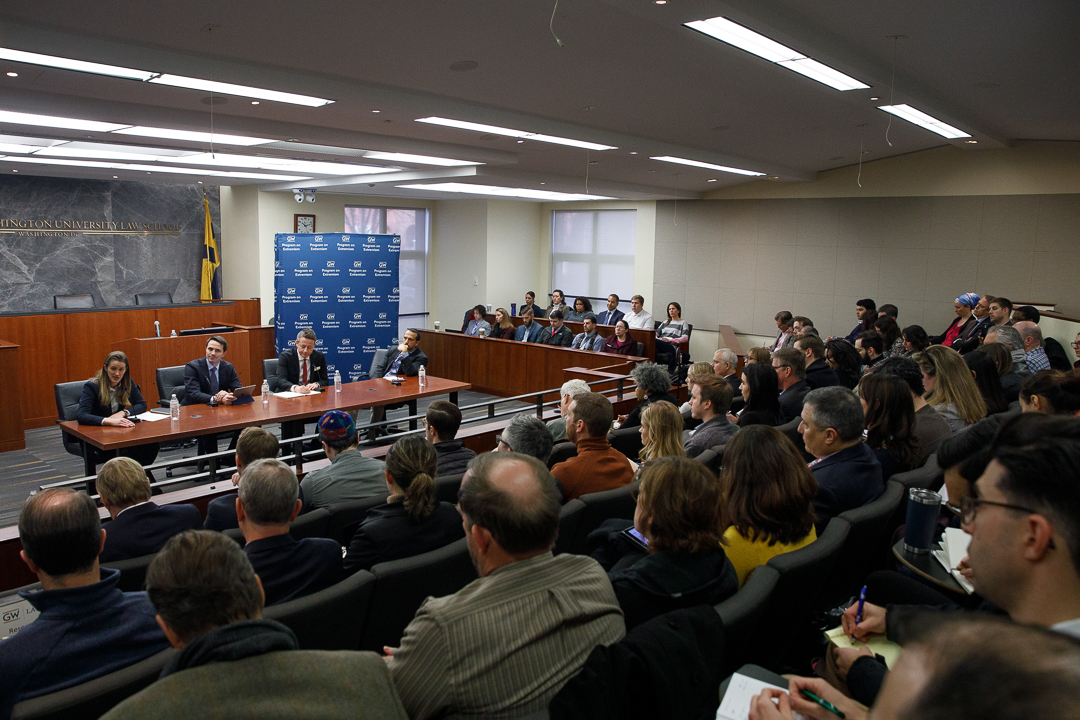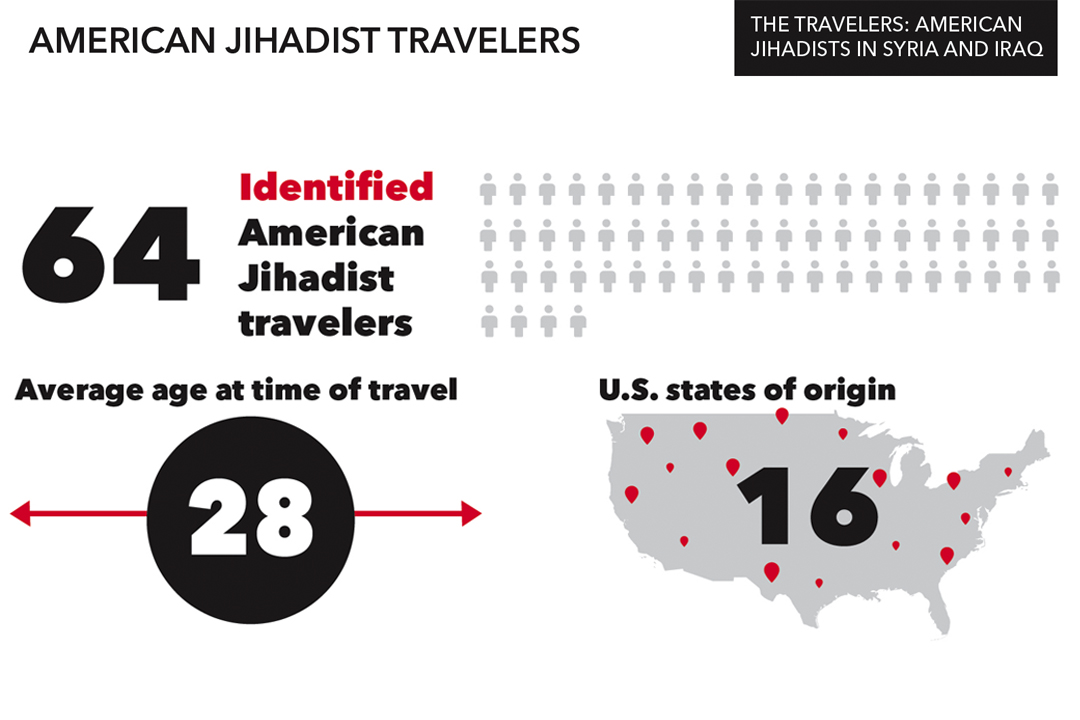By B.L. Wilson
A panel of experts on the jihadi movement agreed that the Islamic State is in decline, with its loss of territory in Syria and Iraq, but said the decline is likely temporary as the group remains active in Afghanistan and other countries in the region.
The panelists, hosted by the George Washington University’s Program on Extremism in cooperation with the Norwegian Defense Research Establishment and the Norwegian Ministry of Foreign Affairs, also generally agreed that the Islamic State’s setbacks have raised questions about the future of the jihadi movement. The discussion was moderated by POE Research Fellow Haroro Ingram.
In opening remarks Friday at the event, titled “Jihadism after the Caliphate,” at GW Law’s Jacob Burns Moot Courtroom, Norway’s Ambassador Kare R. Aas noted that substantial progress has been made “in combatting violent terrorism but the threat remains.”
“ISIS is not yet defeated,” he said. “The underriding drivers of terrorism are present and perhaps even stronger than before.”
Anne Stenersen, a Norwegian Defense Research Establishment senior research fellow and author of “Al-Qaida in Afghanistan,” said that of all the jihadi groups, al-Qaeda has “the greatest chance of survival in the long run.”
She said it operates on a “franchise model” that its leader Ayman al Zawahiri speaks of as “the vanguard of the insurgency” with clients across the Muslim world that can adapt to local environments “preaching and educating the local population and running training camps,” working together against what al-Qaeda views as its main enemy, the United States.
She said the organization maintains a small department that is responsible for international terrorism with cells that operate clandestinely and expects the organization to set its sights on Africa, primarily the Sahel-Mali region, as its next theater of international terrorism.
Dr. Stenersen said countries in the region have weak security services and a younger jihadi movement that has experienced a limited degree of success in attacks on U.S. forces.
Thomas Hegghammer, another Norwegian Defense Research Establishment senior research fellow who has published widely on Islamic militancy, focused on the jihadi movement in Europe, which he said has experienced “a wave of attacks, especially from 2015 to 2017 when almost 400 people were killed in jihadi attacks.”
“I expect a dip in the short term and a resurgence of activity in the long term—in four to 10 years,” he said.
Dr. Hegghammer said his pessimistic outlook has been tempered by the response of European governments that have taken tougher counter measures against terrorism, stepped up law enforcement, improved intelligence, kept closer tabs on returning fighters and cracked down on the use of the internet as a jihadi propaganda tool.
“There has also been certain aversion to the Islamic State, to some extent a backlash against the brutality and the Islamic State’s broken promises,” he said.
Rounding out the discussion, Cole Bunzel, a research fellow in Islamic law and civilization at the Program on Extremism at Yale Law School, discussed the ideological dimensions of Jihadism and fragmentation within the ranks of ISIS and al-Qaeda that has generally flown over the heads of jihadis in the field.
In recent years, he said, there have been heated arguments among jihadis between groups pushing for a more inclusive movement and purists who want to maintain separation from nonbelievers and view those who accommodate less strict adherents to the religion as “diluters.”
Within the Islamic State this argument has taken a severe form, according to Dr. Bunzel, with extremist elements issuing a strict interpretation of “takfir” as the official doctrine, meaning anyone who disagreed would be considered a heretic and killed. The resulting dispute led to imprisonment and executions on both sides that ISIS leader Abu Bakr al-Baghdadi has yet to entirely resolve.
Despite the conflicts and the Islamic State’s setbacks in Syria and Iraq, the jihadi movement has grown exponentially over the past decade, and he said the divisions are the product of a growing movement.



